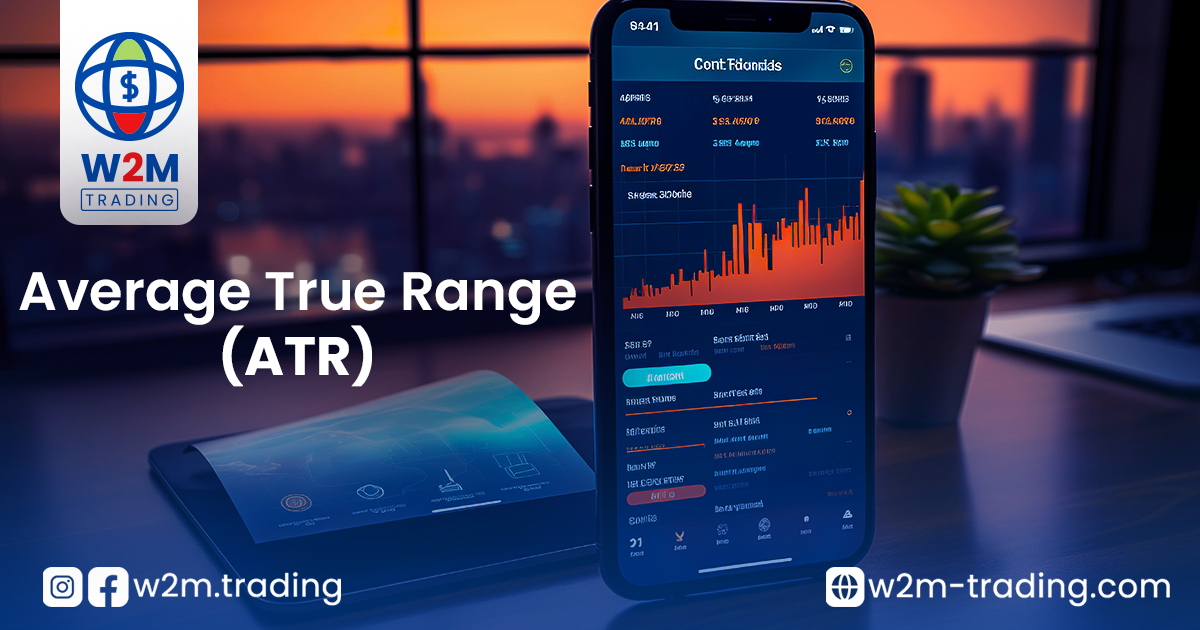- Attractive Education
- Beginner to Advance
- Flexible Timing

The Average True Range (ATR) is a popular indicator in technical analysis used to measure the degree of price volatility. This indicator was created by the well-known trader and analyst Welles Wilder in 1978, with the aim of providing a quantitative method to measure the underlying volatility of an asset.
Many traders often confuse the concepts of volatility and momentum. Volatility is the rate of price change compared to the average, while momentum refers to the strength of a trend in a particular direction. Therefore, in volatile markets, there can be wide price ranges, while less volatile markets tend to have narrower ranges.
ATR is designed to measure volatility only and does not indicate the direction of prices or their momentum. By tracking the degree of volatility, the indicator helps traders identify times when an asset’s price may be heading toward higher or lower volatility. There are other indicators that measure fluctuations, such as Bollinger Bands and Keltner Channels.
How to Calculate ATR
To calculate ATR, a smoothed average of the true range values of the asset is used. The true range of the asset over a specific time period includes the difference between the highest and lowest prices. However, Welles considered that the “true range” should take into account previous closing prices, allowing for any price gaps that may occur. Accordingly, the true range in any time period is defined as the greatest of the following:
– The difference between the current high and the current low.
– The difference between the current high and the previous closing price.
– The difference between the current low and the previous closing price.
Negative or positive values of the true range are not taken into account; only the absolute number is used in the calculation. After calculating the first ATR, the following formula is used to calculate subsequent values:
Current ATR = [(Prior ATR x (n-1)) + Current TR] / n
where “n” is the number of periods specified by the user. The default number in most trading platforms is 14, but traders can adjust it according to their needs. Clearly, a larger “n” leads to a slower volatility measurement, while a smaller “n” results in a faster measurement.
How to Read ATR
Interpreting ATR values is easy and straightforward. When the ATR line rises, it indicates that the asset’s volatility is increasing. Similarly, when the ATR line falls, it means that the volatility of the asset is decreasing. Markets fluctuate between periods of high volatility and low volatility, and ATR can help traders track these changes.
Having an understanding of volatility can assist traders in setting specific price targets. For example, if the EUR/USD pair has moved 100 pips over the last 14 periods, it is likely that a price target of less than 100 pips will be achieved during the current trading session.
How to Use ATR in Trading
ATR is used to determine the potential range in which the asset’s price can move over a specific time period. This information can be utilized to trade the following opportunities:
Best indicator combinations to pair with ATR:
ATR measures only one price element – volatility. Therefore, it is essential to combine it with other indicators to identify qualified trading opportunities in the market. Among the best strategies for ATR indicator combinations are:
ATR/Stochastics:
Ideal for trading in markets that move within a certain range, as they provide signals for overbought and oversold conditions. ATR helps qualify range-bound markets and avoid sudden false signals that the Stochastic indicator may produce in unstable markets. Low ATR values confirm range markets, and buy/sell signals can be generated through Stochastic crossovers in overbought and oversold areas.
Using ATR for exits:
Regardless of the quality of the entry, profit or loss is ultimately determined when exiting the trade. ATR is effective in identifying optimal price points for placing stop-loss and take-profit orders. For example, if the GBP/USD pair has an average ATR of 150 pips, a take-profit of 120 pips is likely to be achieved during a particular trading session compared to a take-profit of 200 pips. Similarly, placing a stop-loss more than 150 pips away gives your trade enough breathing room without risking an early loss. Since it shows high and low volatility levels, ATR can also be used to place suitable trailing stop orders, ensuring a reduction in overall risk while giving you the opportunity to take profits during a trend.
You can learn more about the only trading indicator you can’t do without | The best and most important indicator in the trading world and how to use it interactively through here
You can also follow everything related to trading through the educational series on trading in the foreign exchange market on the YouTube channel through here
This site is protected by reCAPTCHA and the Google
Privacy Policy and
Terms of Service apply.